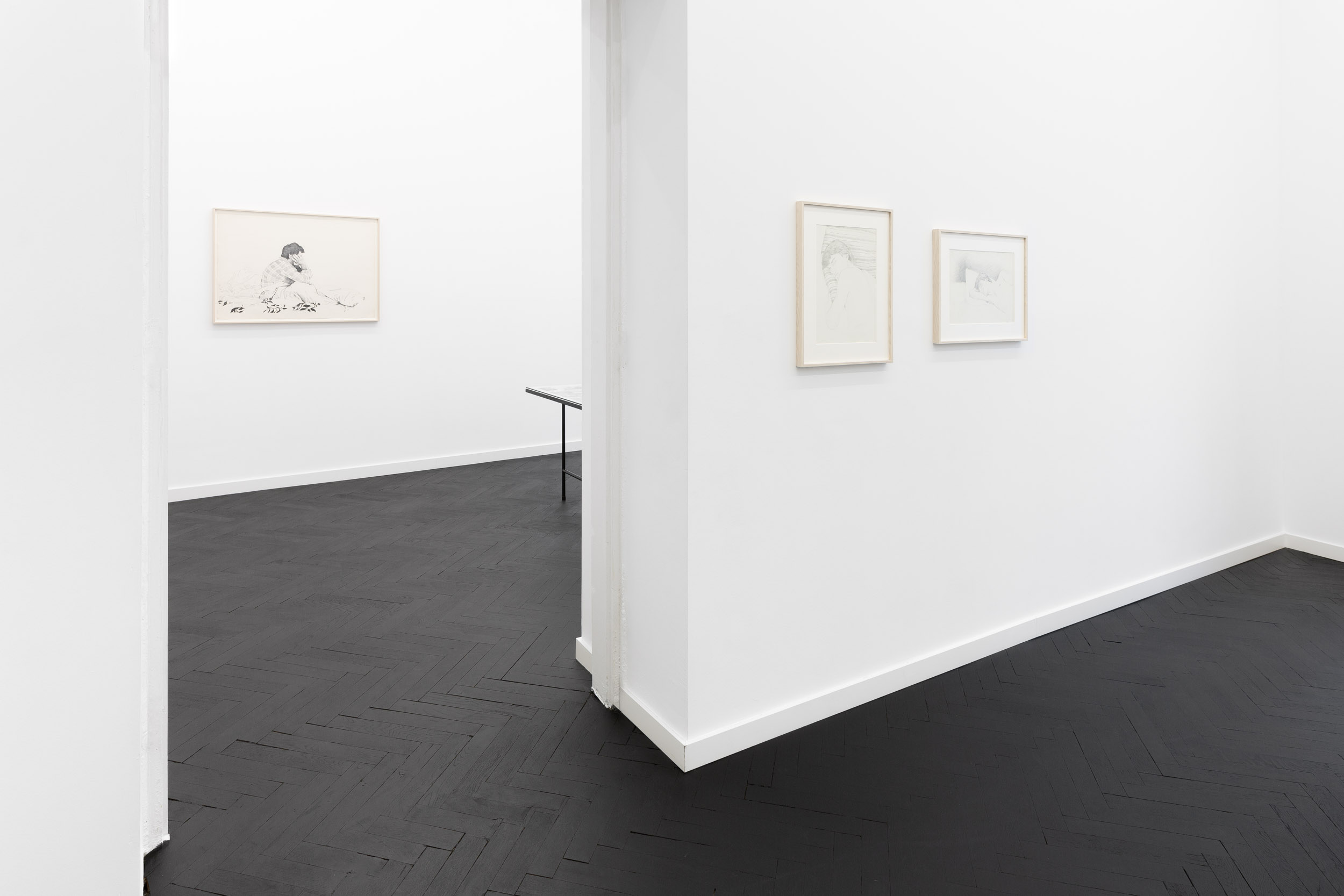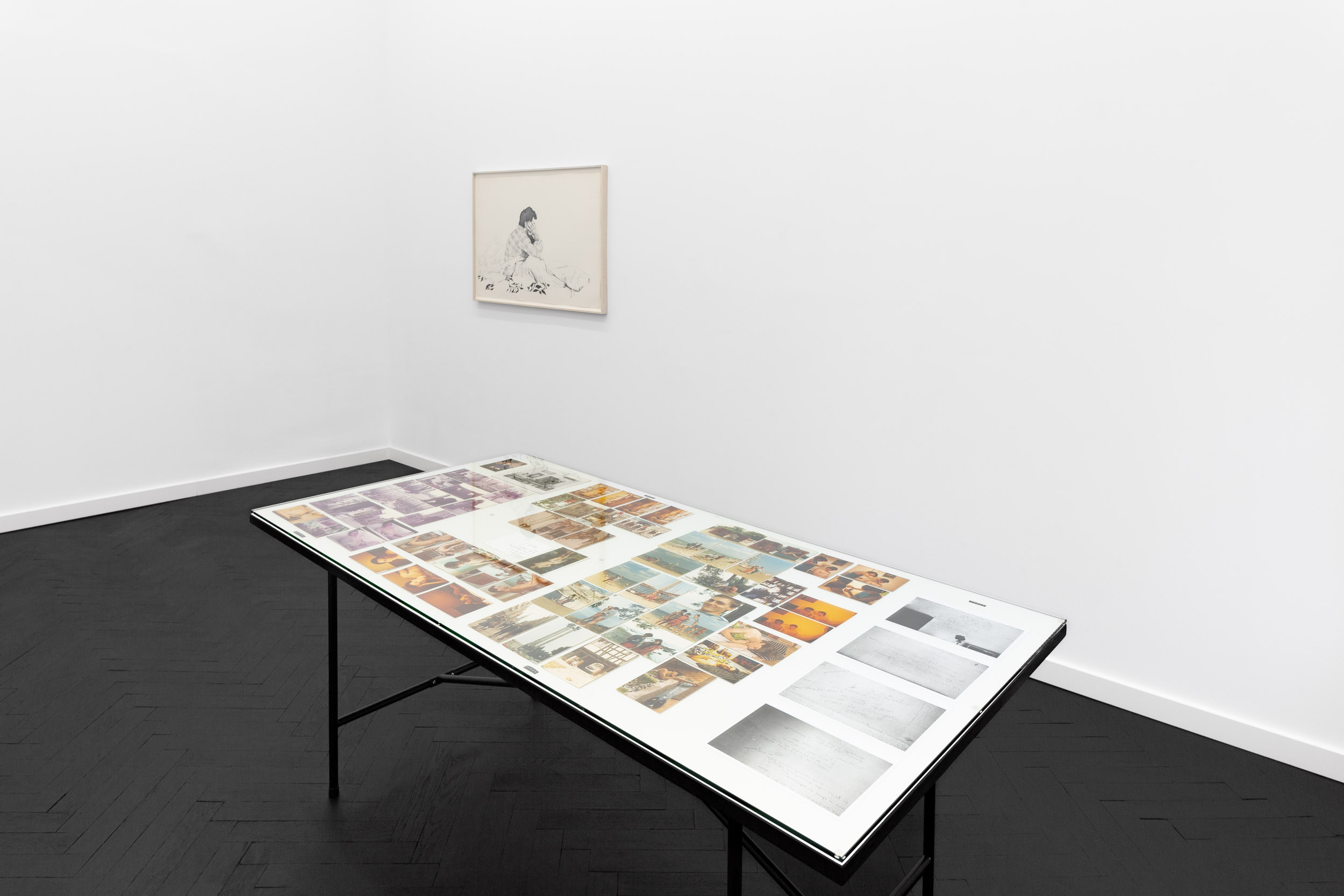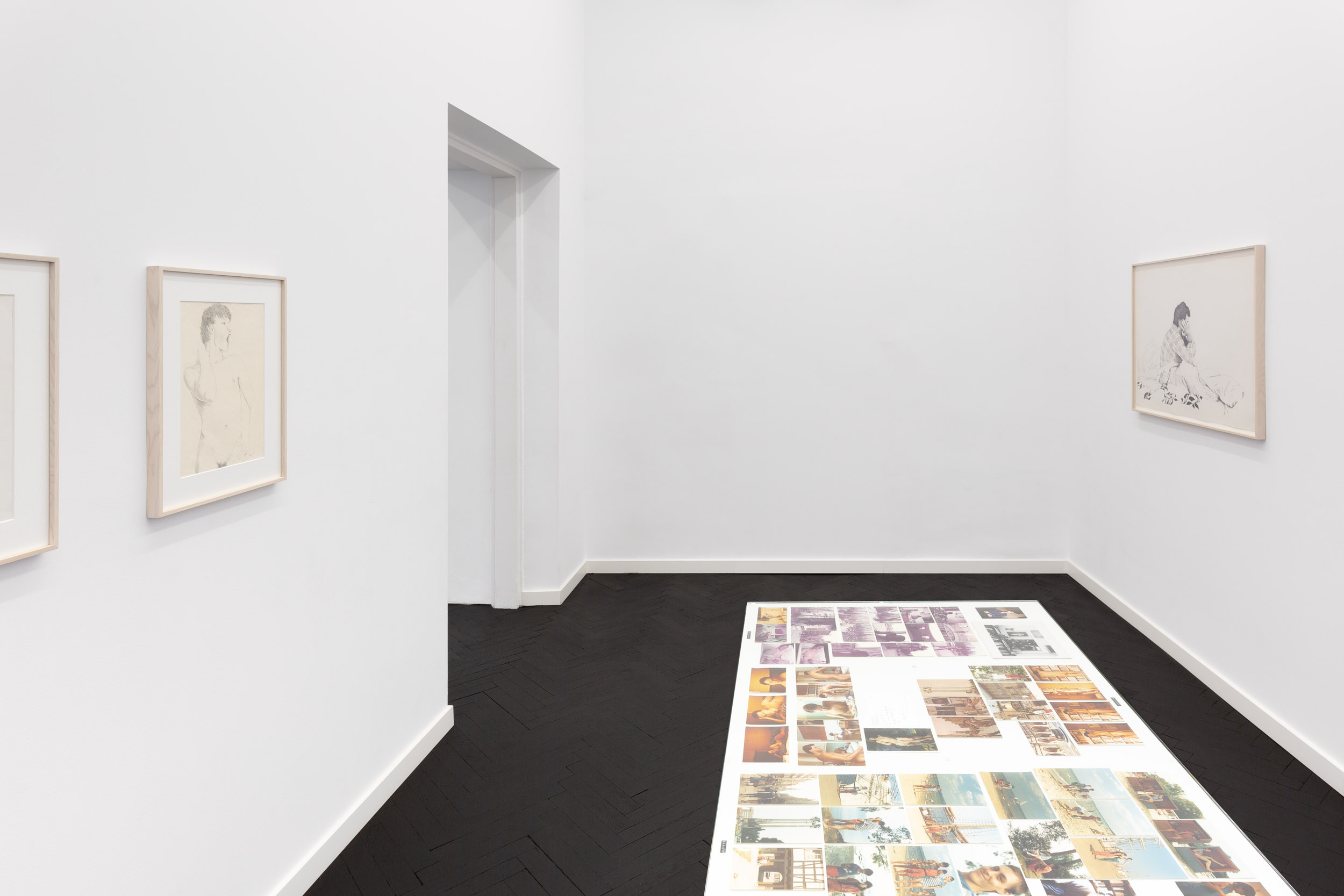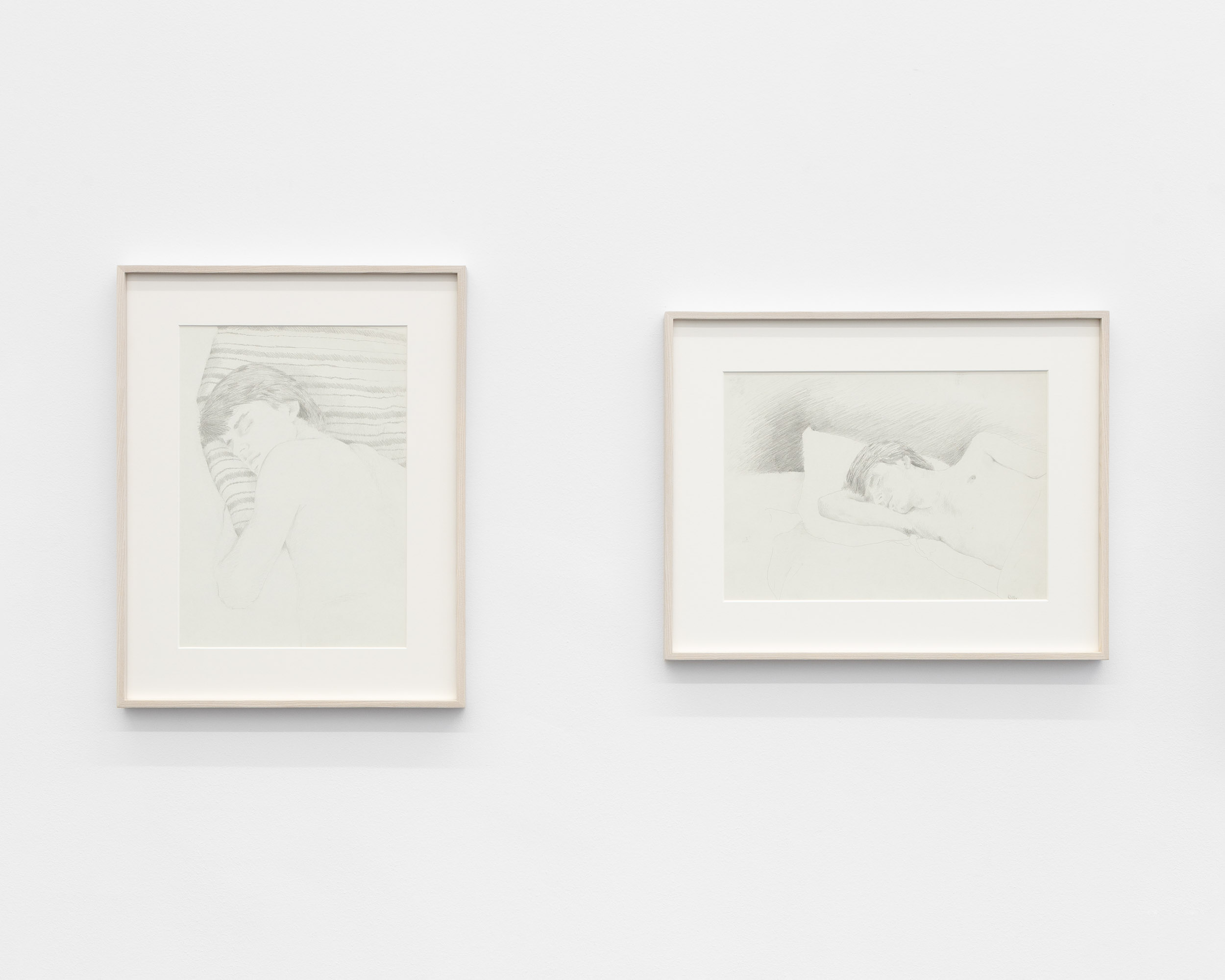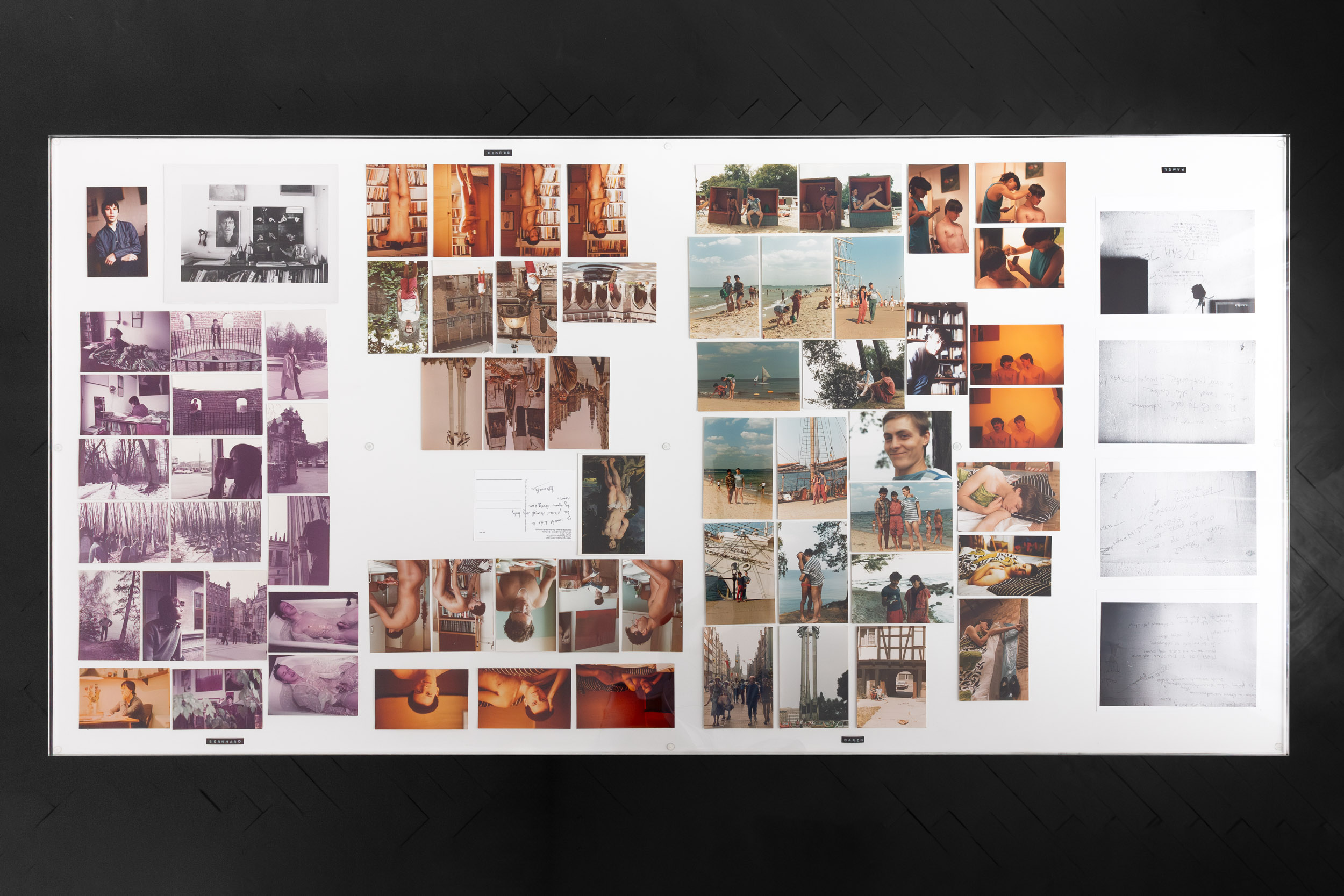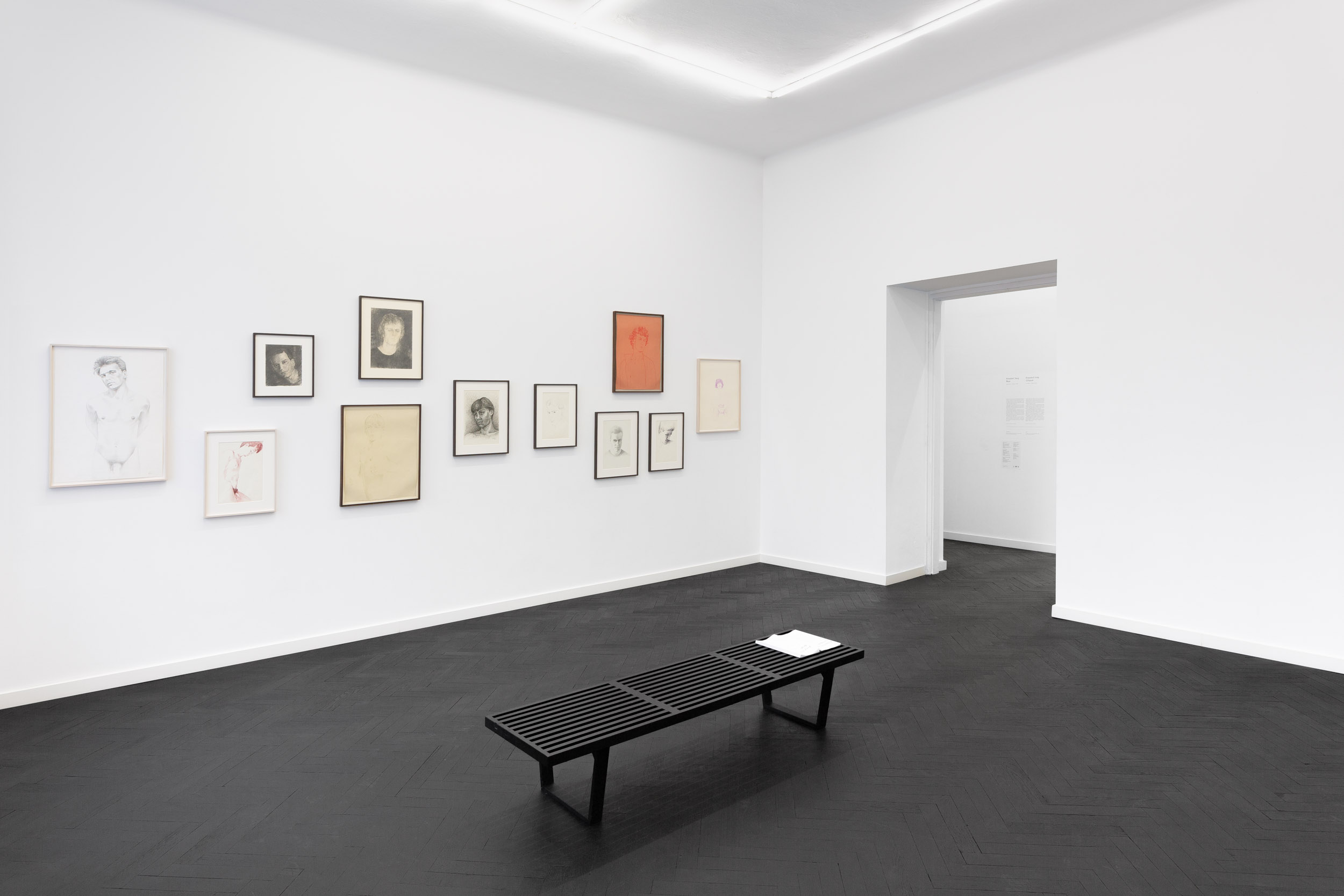

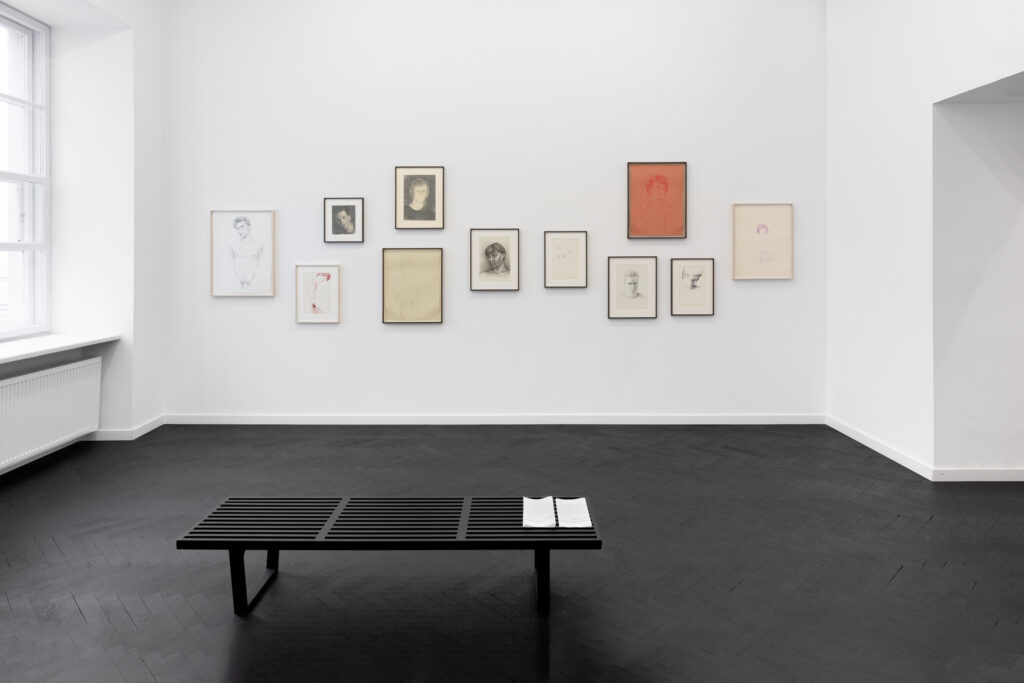

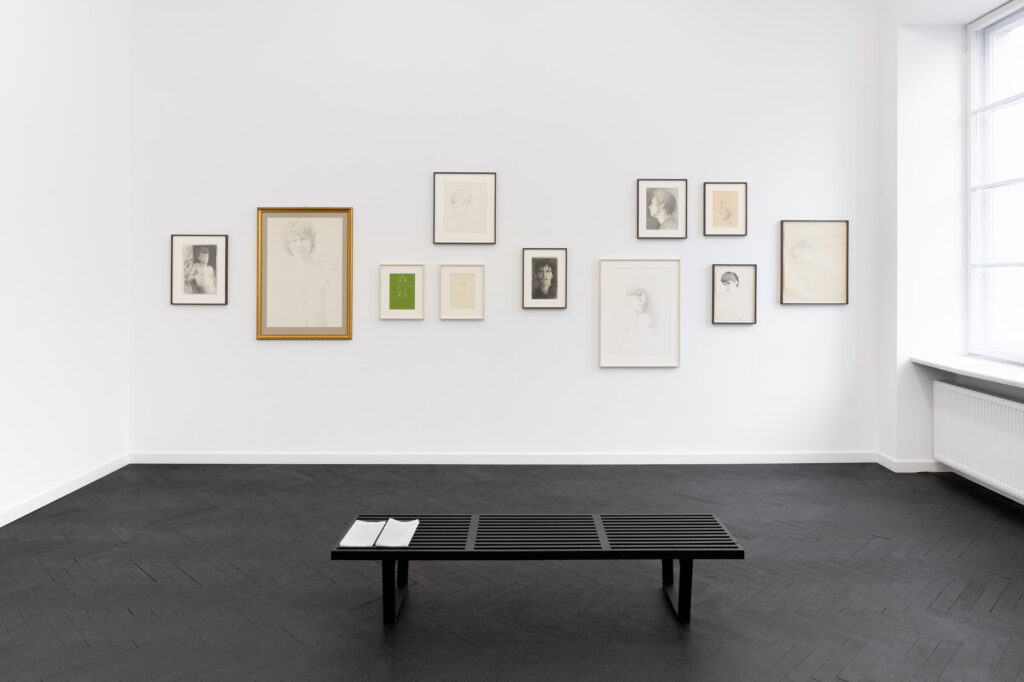
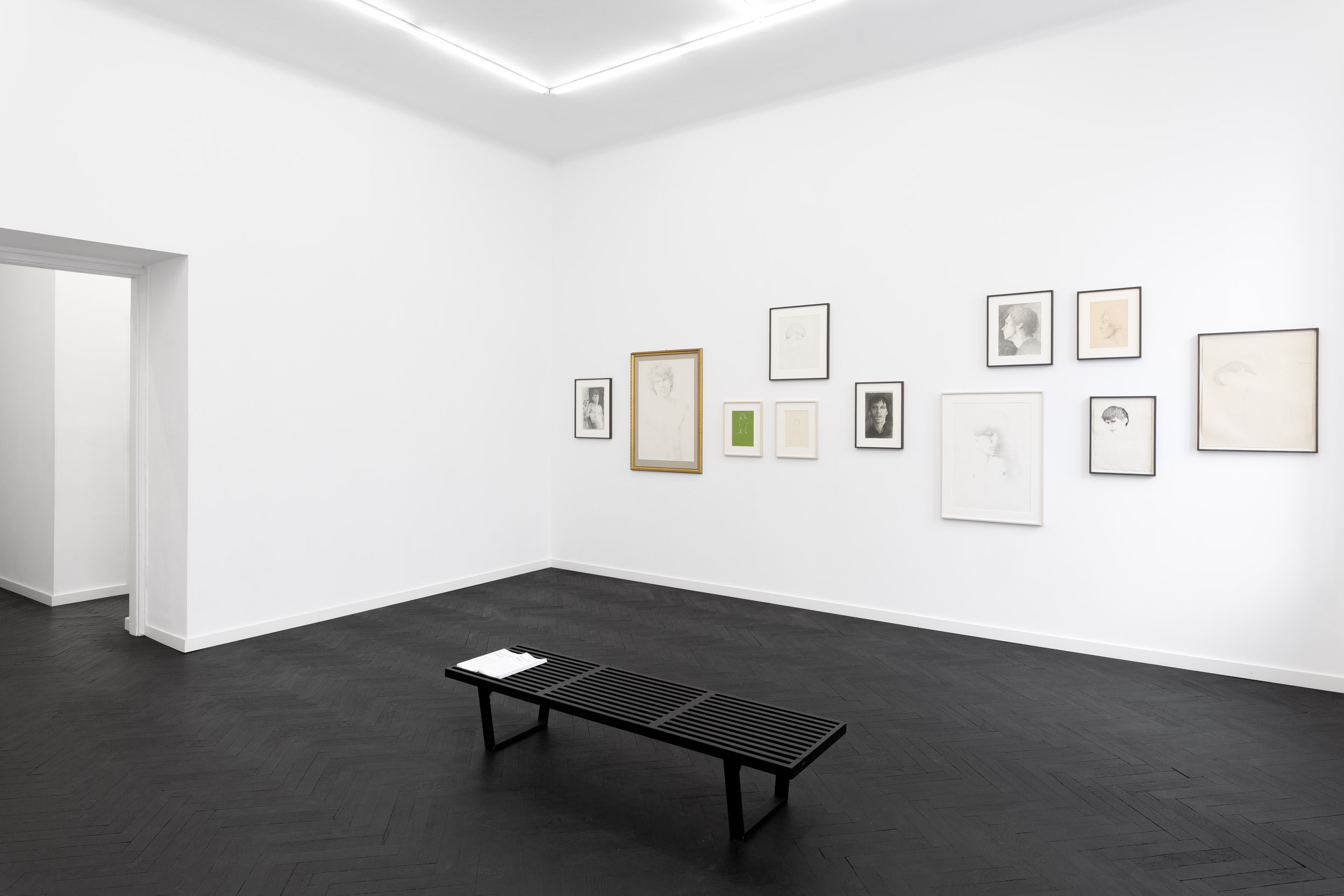
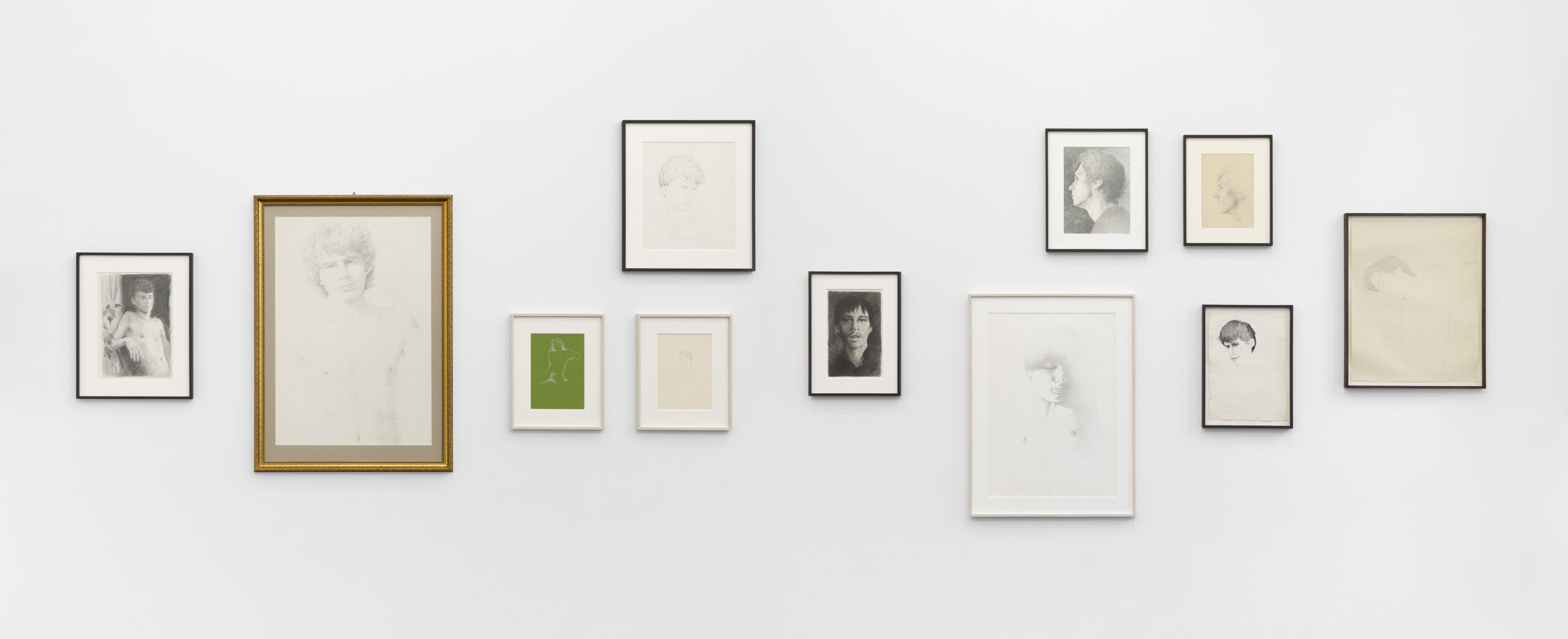
Krzysztof Jung
Boys
Sep 28 – Nov 18, 2023
Gunia Nowik Gallery
Bracka 18/62
Opening Hours:
Tue–Sat: 12 – 6 pm
Curatorial cooperation: Karol Sienkiewicz
Krzysztof Jung died a quarter of a century ago, but the trace he left in the hearts of his friends, boyfriends and lovers is still strong. He operated at high emotional amplitudes, had an infectious energy, was intense and demanding – especially towards the men he loved. We dedicate this exhibition to them. This exhibition depicts love.
The portraits of men presented in the first room manifest these feelings. Jung drew his loved ones as if he wanted to perpetuate his affection towards them. He often bestowed them his works, occasionally he gave them a self-portrait, as if he was handing over himself.
We cannot identify all the men inhabiting Jung's drawings. Some of the portraits resulted from a fascination with someone's beauty. However, many depict men who accompanied him in life for a while or – in the case of some – for longer. We take a closer look at the most important of them in the following rooms, where we have showcased photos and other items taken from the artist's archive.
The exhibition also allows you to trace Jung's extensive network of connections in Poland and Europe. From the mid-1970s, Jung traveled abroad, sometimes for several-month stays, creating his own enclaves in various cities – Stockholm, Paris, Berlin.
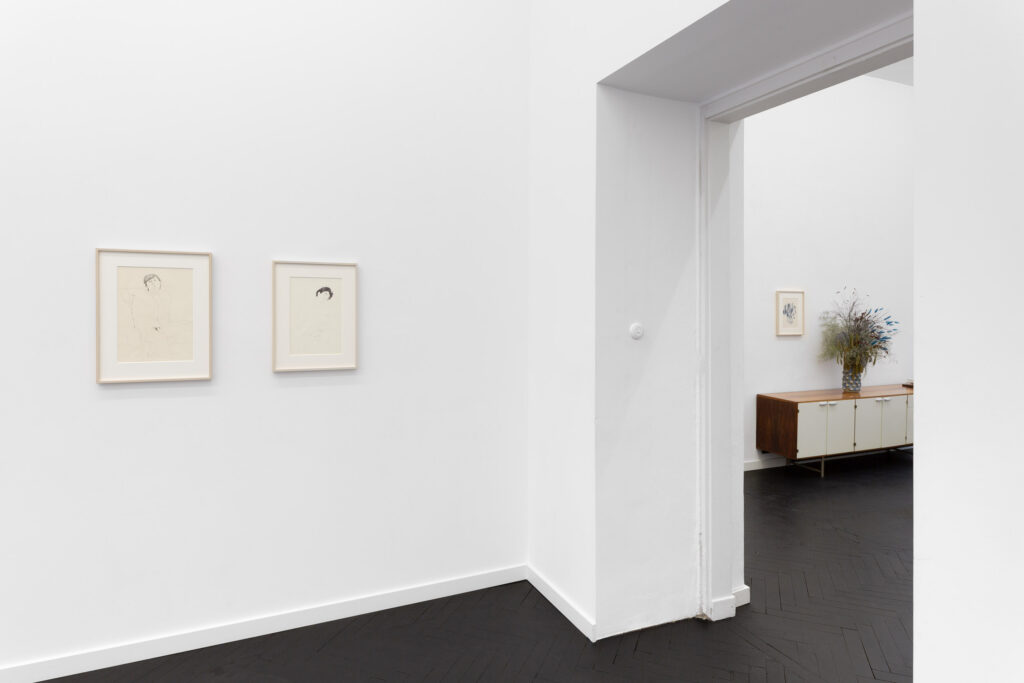
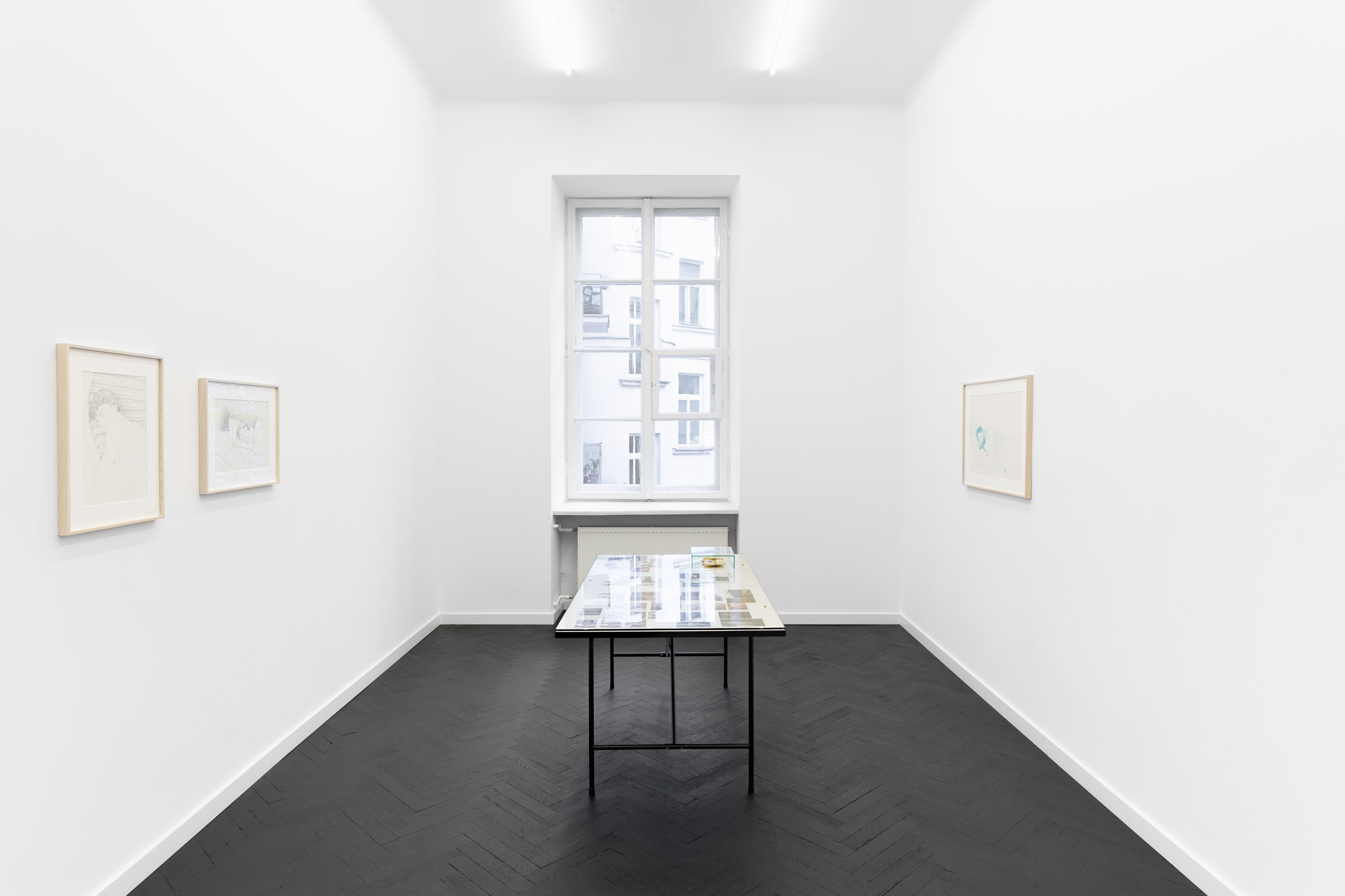

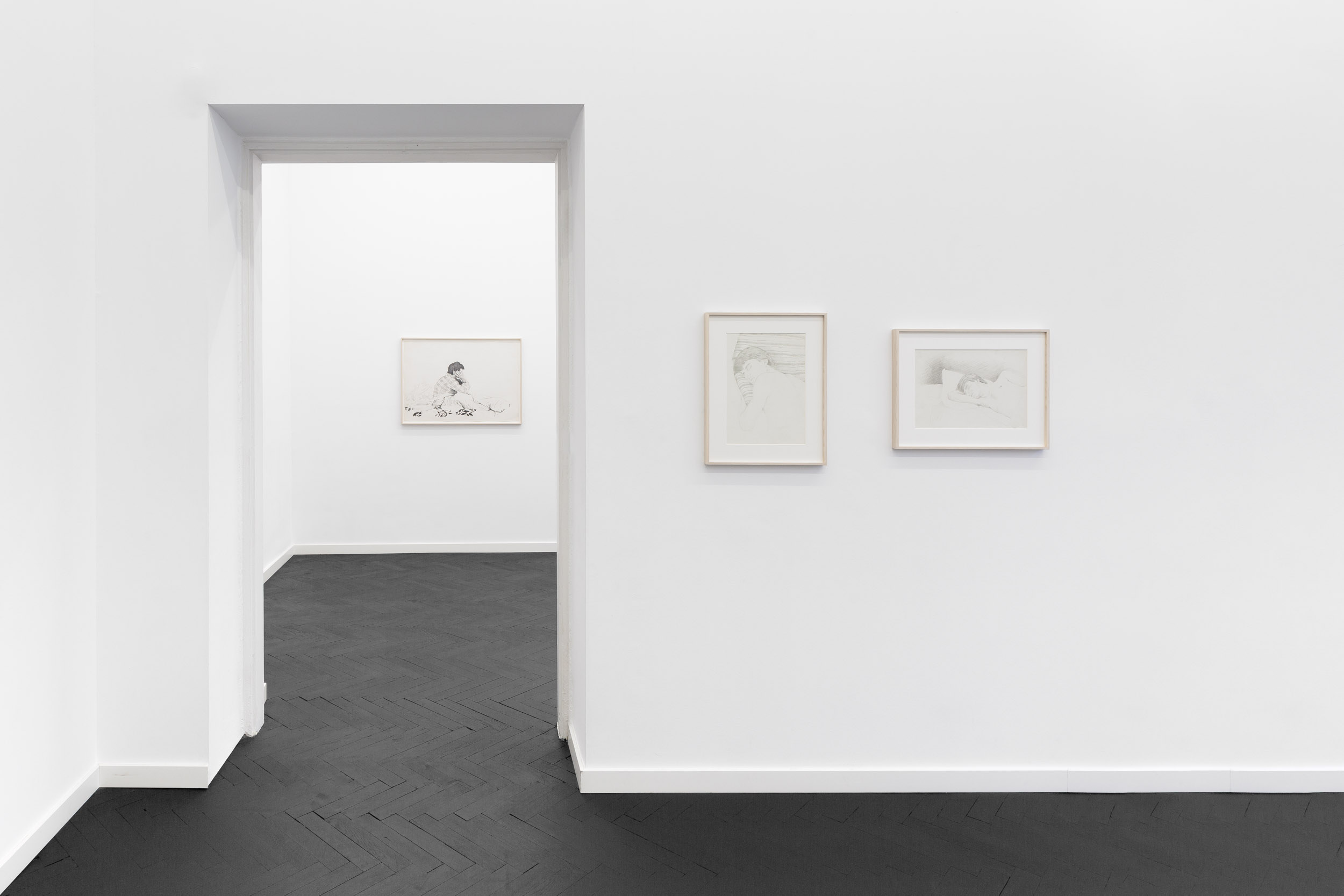

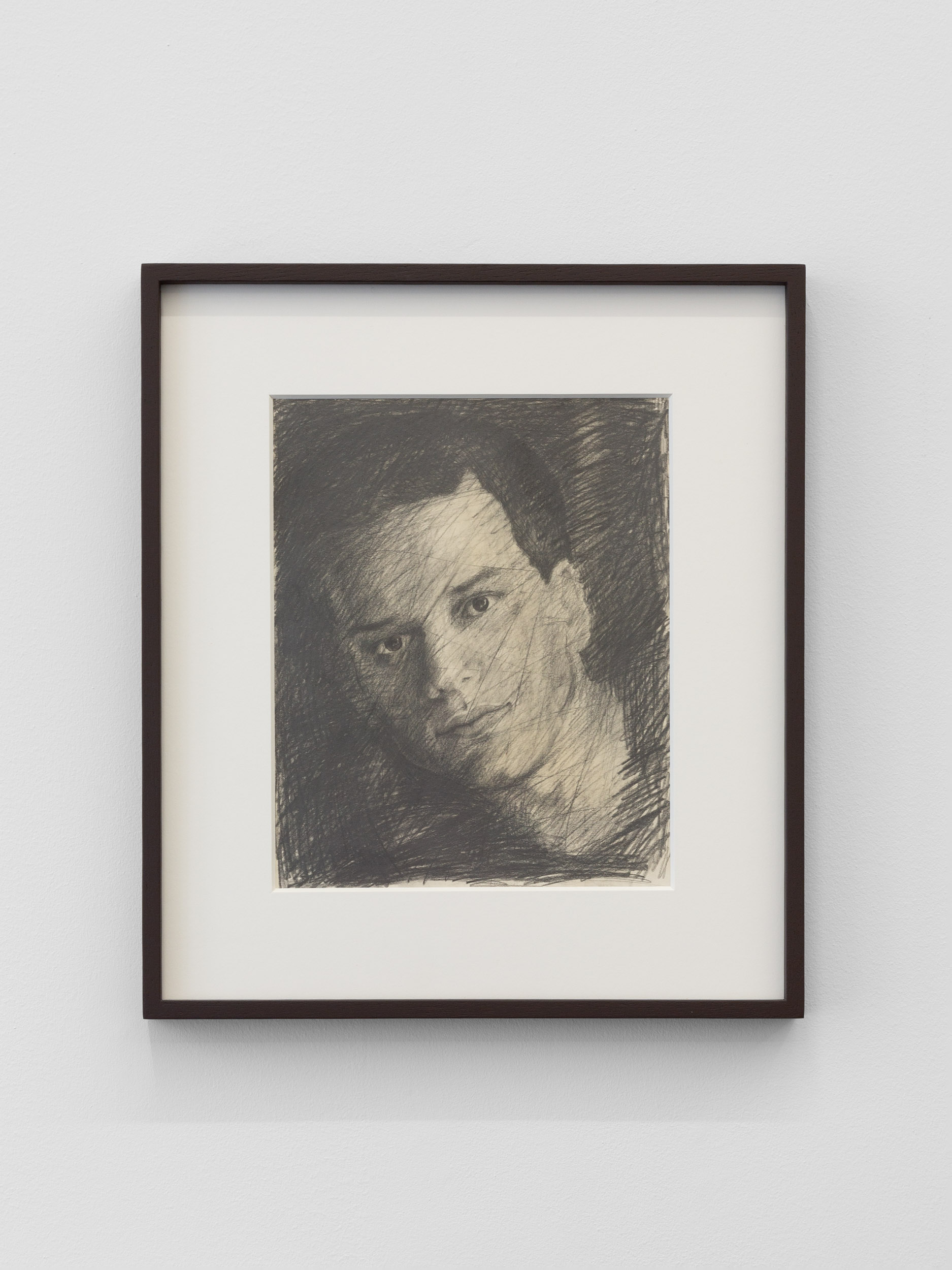
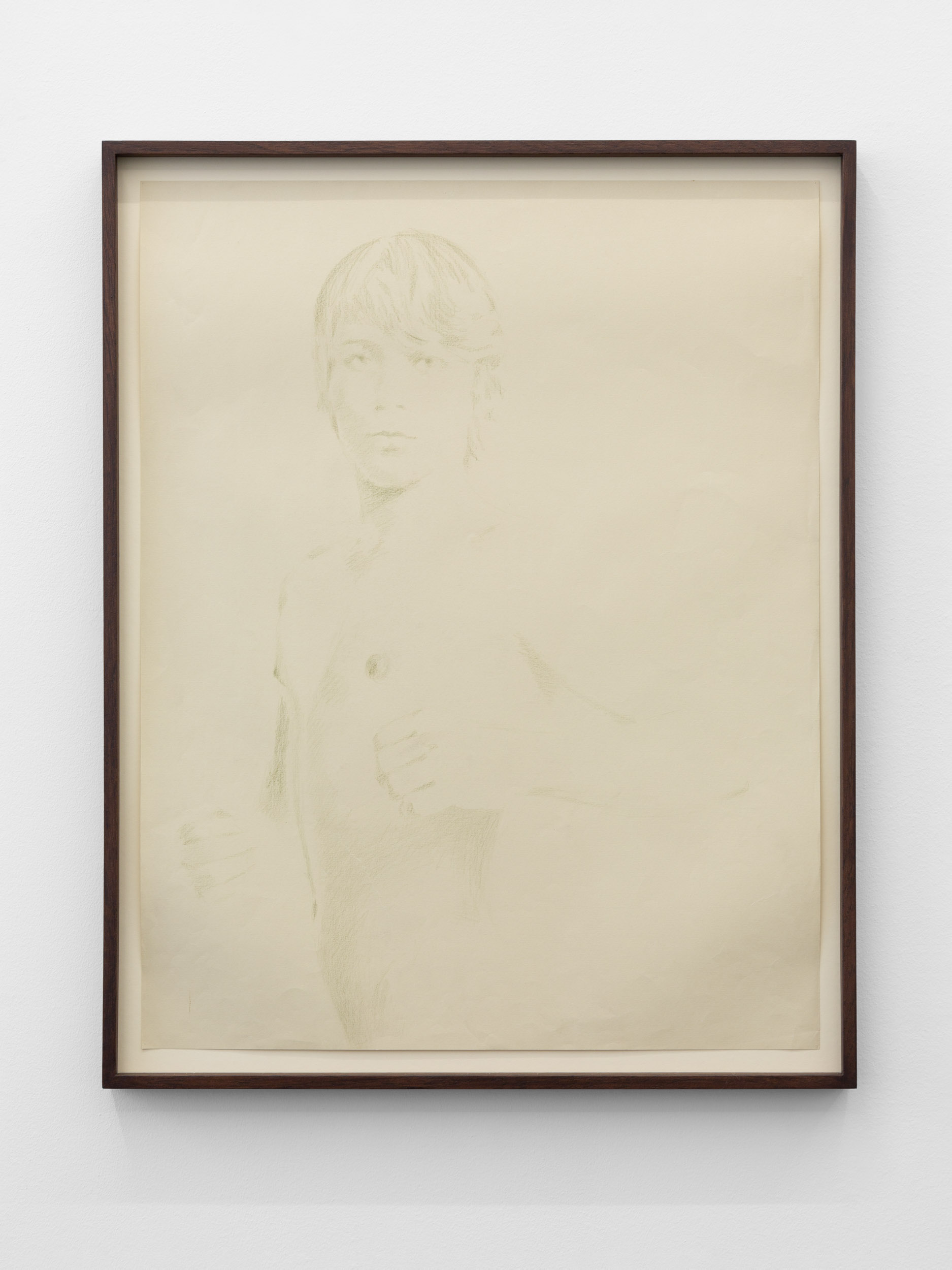
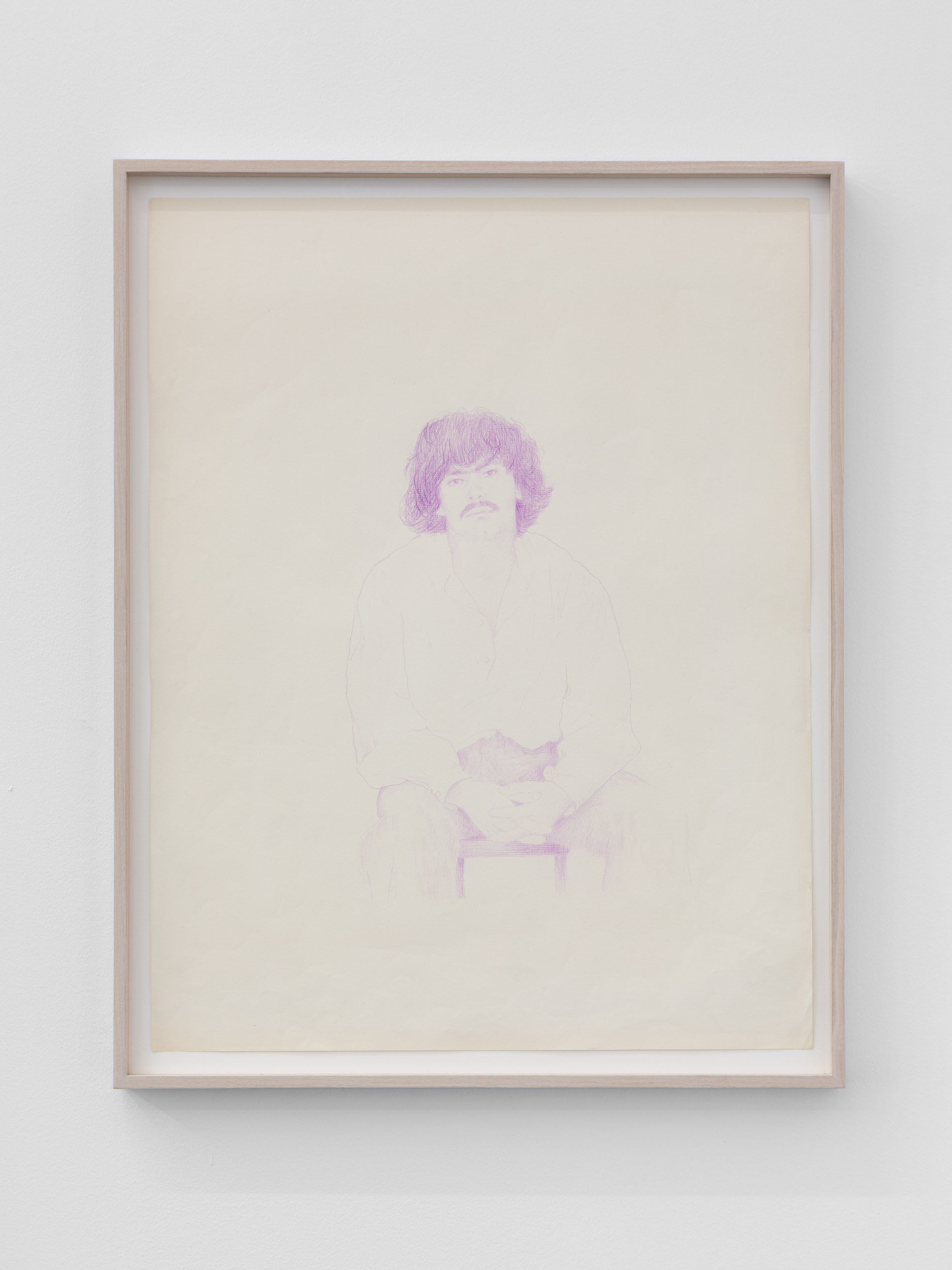
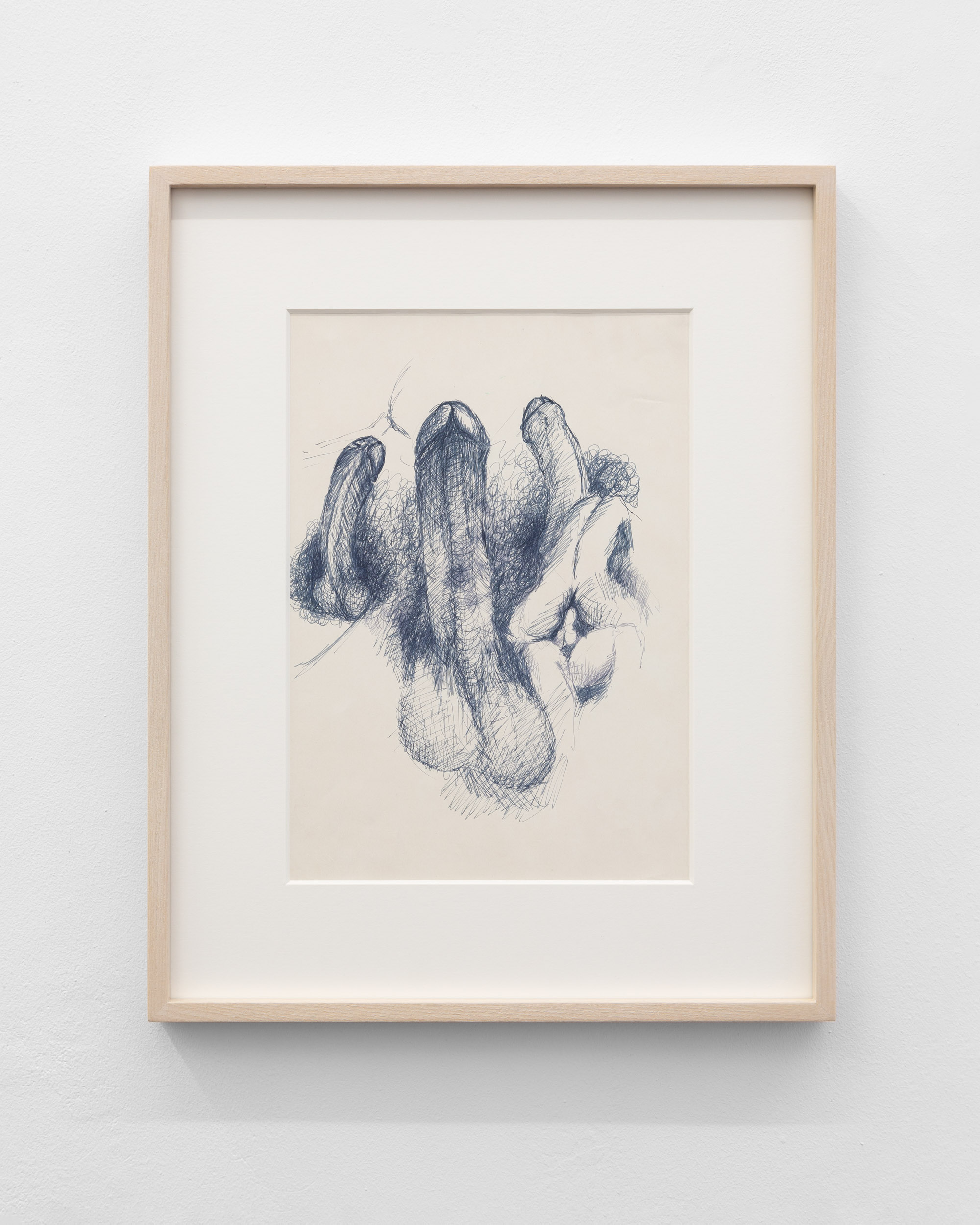
Krzyś
(1k, 2c)
"He could be greedily, euphorically in love or tragically unhappy," wrote artist Grzegorz Kowalski about Krzyś Jung. Krzyś – this is how he introduced himself and how his friends called him. He loved nature. He invited his friends to Jungówka, a summer cabin bought by his parents, which he turned into an almost idyllic oasis of freedom. He didn't tolerate loneliness well, but he had the gift of winning people over. After Krzyś's sudden death in the fall of 1998, his friends discovered a collection of drawings – landscapes and portraits of men – in his futon.
Anders
Krzyś met Anders during a several-month stay in Stockholm at the turn of 1976 and 1977, when he was working in a cafe. As usual, Krzyś recognized Anders' talent and persuaded him to study design. In 1978, Anders met his long-time partner Kettil. The house of Kettil and Anders became a Swedish haven for Jung and his friends for years. They both also visited Poland. During his stay in Warsaw on New Year's Eve 1978, during the memorable “winter of the century”, Anders took part in Grzegorz Kowalski's action-question Could you and would you like to turn into an animal in front of my camera? He posed as a cat fawning over Krzyś, who was standing next to him. In another photo, Jung's friend Mary took on the role of another cat.
Wojtek
(2d, 3c, 4c)
When they met in early 1980, Wojtek was a newly licensed dentist. Once again, Jung left for Stockholm, and for several months they missed each other across the Baltic Sea. In the works of art by Krzyś and his artist friends, they always appeared as a couple. In Jung's Conversation at the Re'Repassage Gallery in December 1980, they threaded their clothes together and then took them off. Together they posed for the work Mirrors by Grzegorz Kowalski (1980) and for the sculpture Ganymede by Barbara Falender (1984). The bond between them is evident in all of these artworks. Jung brought his friends to Wojtek to have their teeth fixed. Wojtek's boyfriend was later Artur, who posed for Krzyś at Jungówka, becoming the subject of many drawings.
Mikołaj
(1e, 1h, 2h, 2i)
Krzyś's relationship with Mikołaj lasted only about a year, but it was intense and resulted in a series of portraits. They met at the beginning of the martial law, when the Repassage Gallery, which Jung considered his second home, had just been closed. On December 11, 1982, Jung dedicated a performance to Mikołaj entitled Teach me, and I will be quiet, show me where I have gone wrong (Job 6:24). The action, which addressed Mikołaj directly took place in the studio of Barbara and Wiktor Gutt in the presence of only a few people. In the semi-darkness, Jung tied himself with threads and knelt in front of the mirror lying on the floor, in which he saw Mikołaj's face. He cut his hair and placed it on the mirror, then set it on fire. As a metaphor for their difficult breakup, Jung used "Dido's Lament" from Act III of the baroque opera "Dido and Aeneas" by Henry Purcell, a story of unrequited love. However, the portrait of Mikołąj hung in his apartment for years to come. In the artist's belongings there was an unopened bundle with his letters.
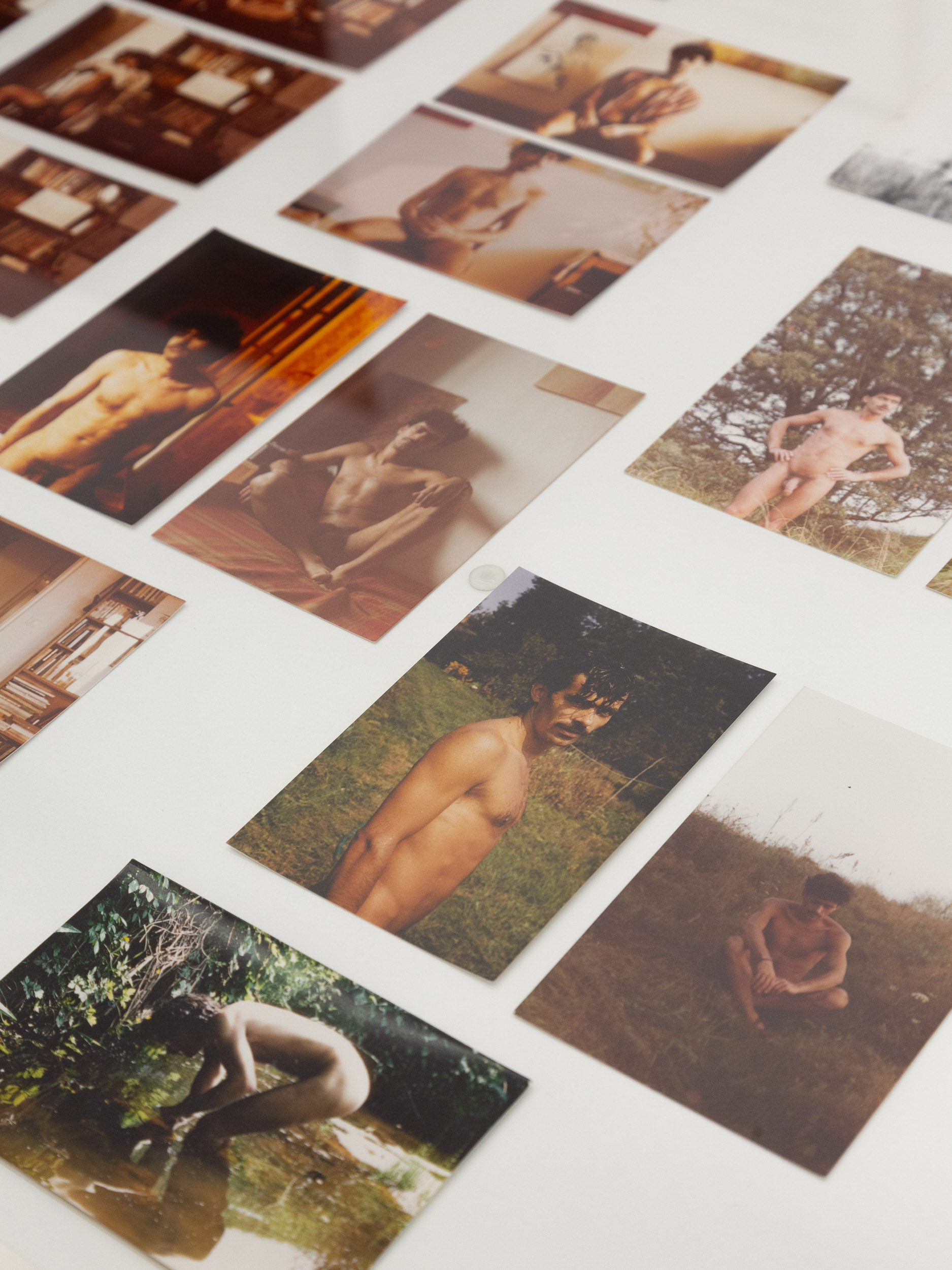
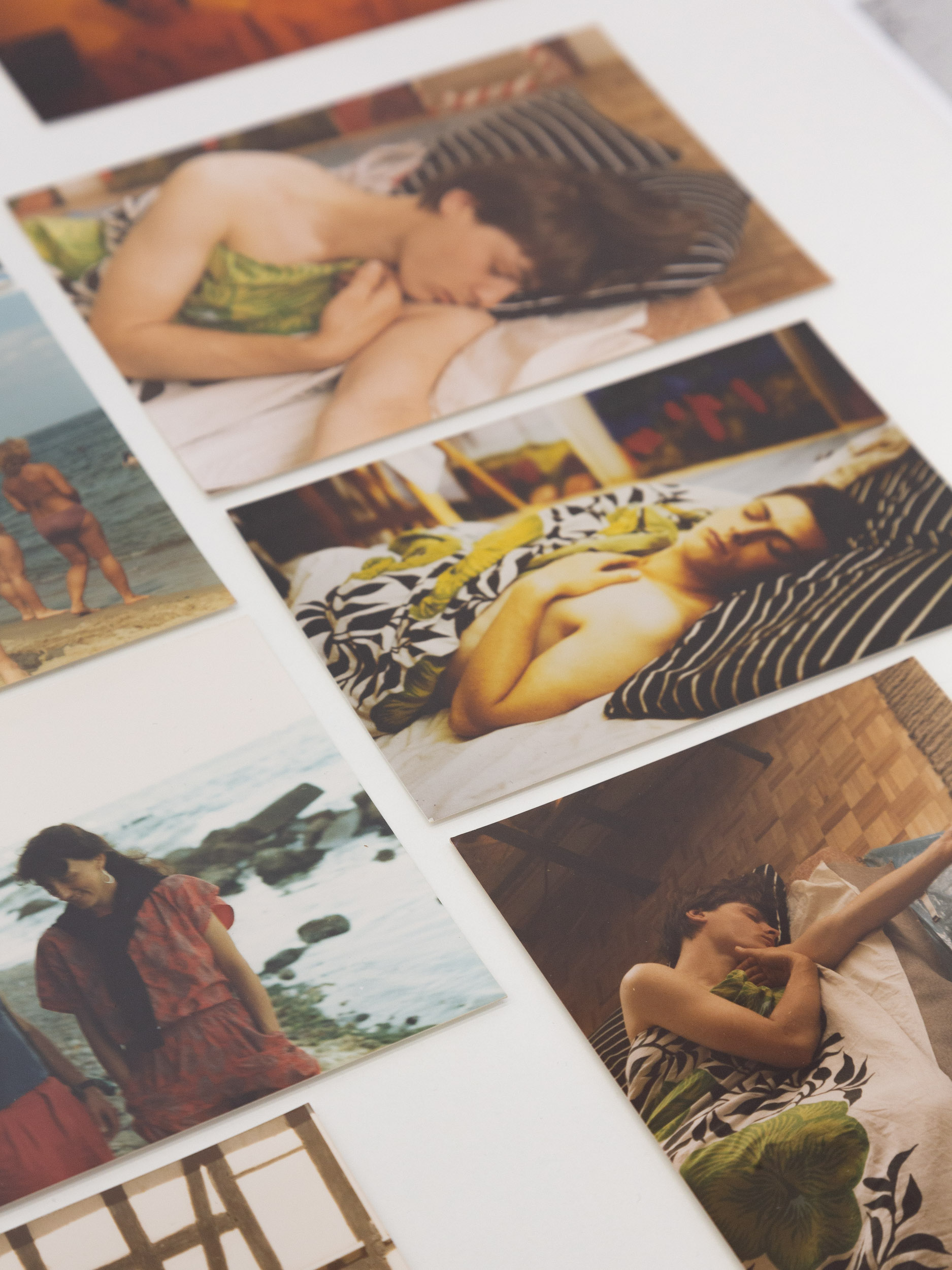

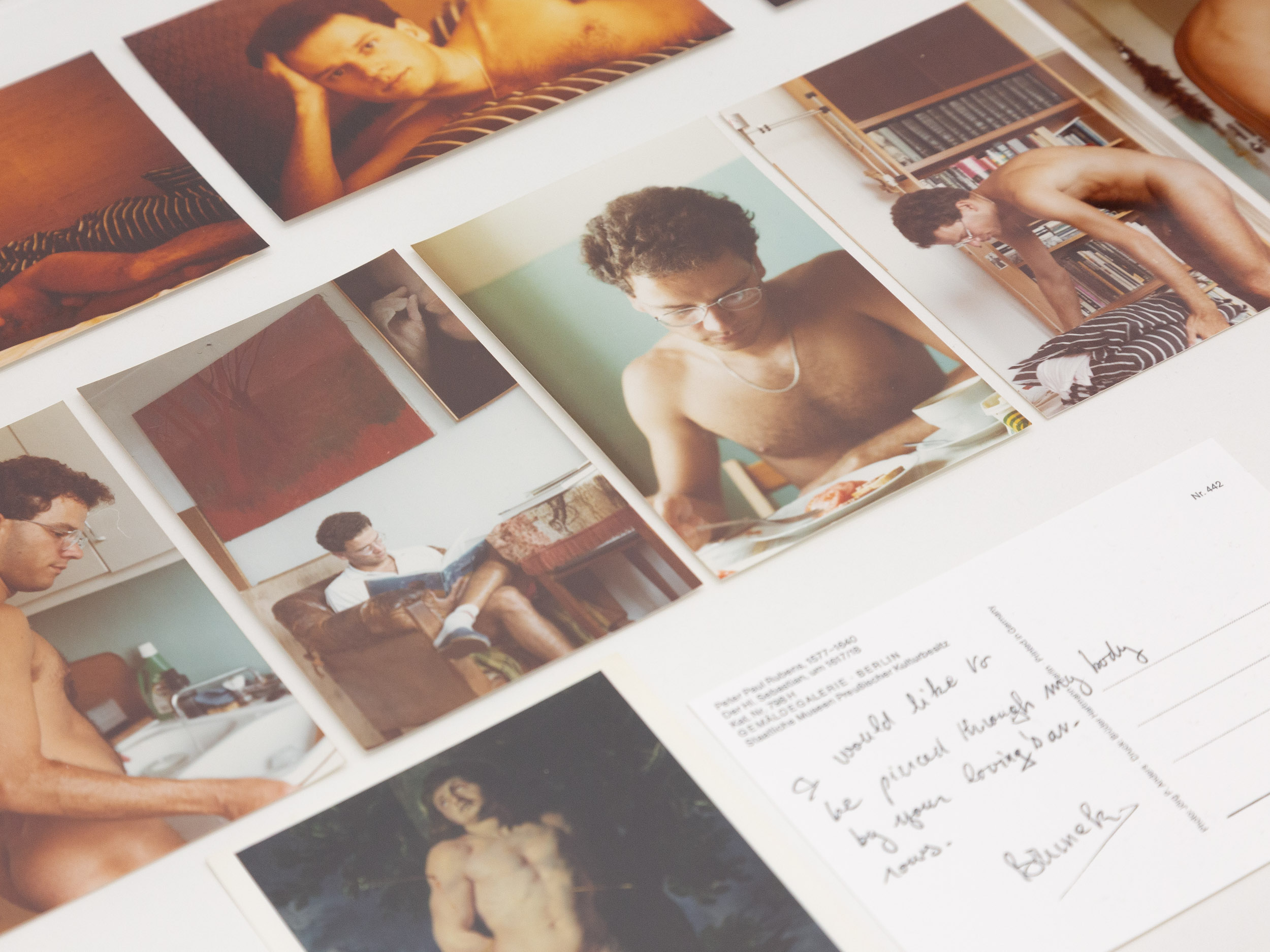
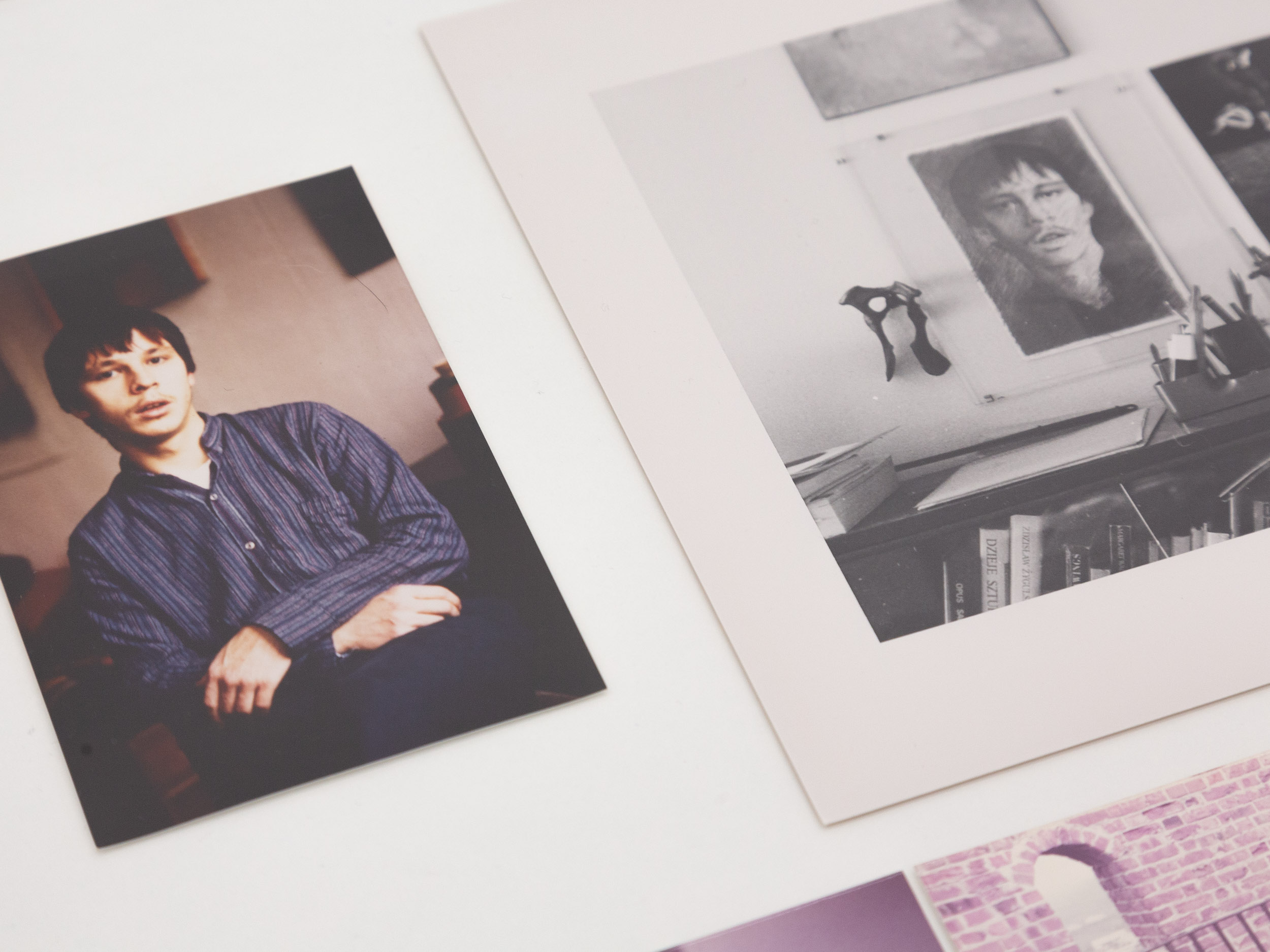
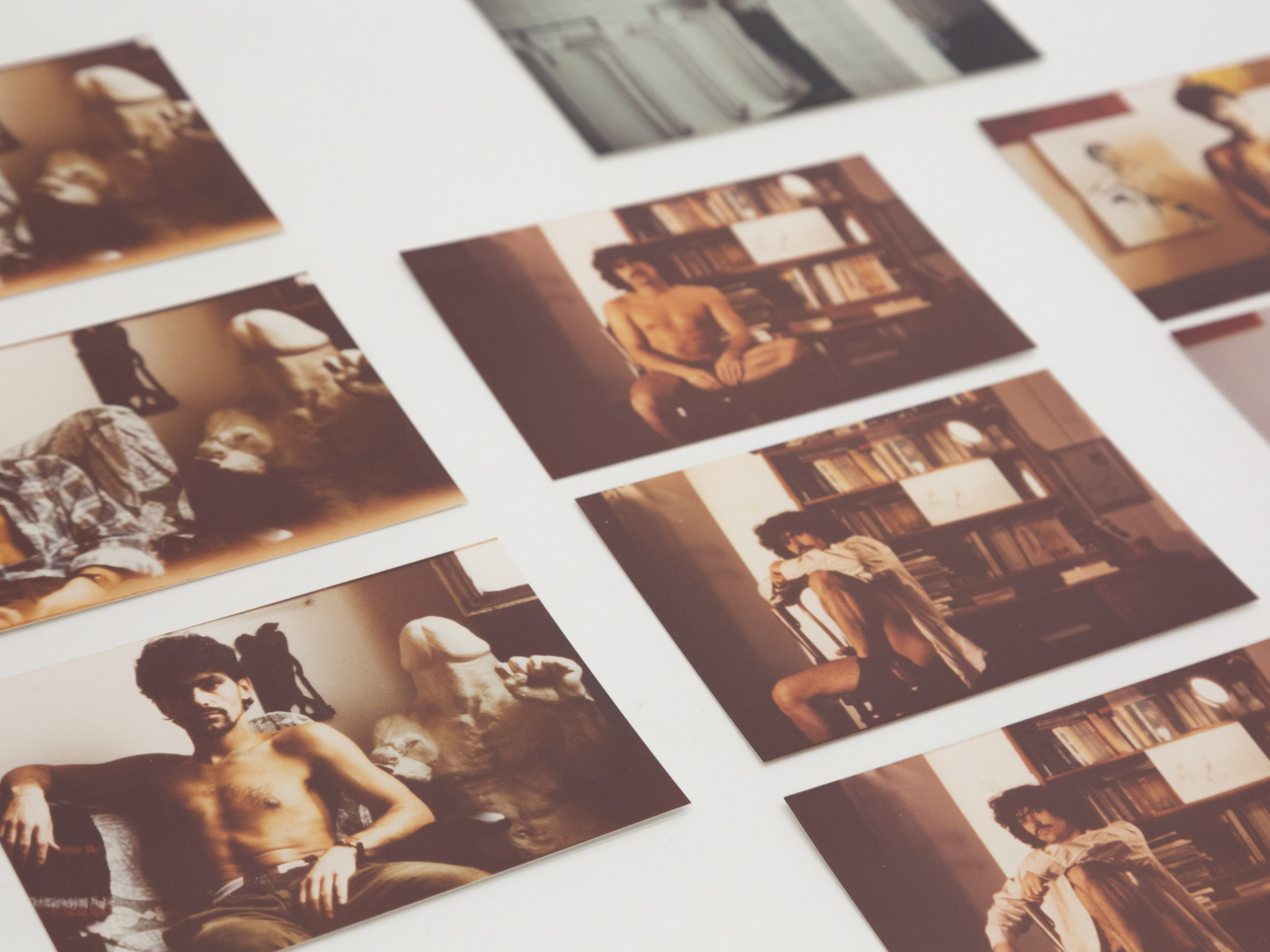
Bernhard
(2f)
In November 1983, when they met in a sauna in West Berlin, Bernhard was 23 years old and Krzyś was 32. Bernhard was studying medicine. Until the end of Jung's stay in Berlin, where he lived with his friend Dorota, they met almost every day. In April of the following year Bernhard visited Jung in Poland for a few weeks. They traveled to Gdańsk and spent a few days in Jungówka. Bernhard took part in Grzegorz Kowalski's action-question Would you like to return to your mother's womb? It was a question Kowalski asked men while photographing them naked in the bathtub. Bernhard doesn't remember that session. Kowalski recalled that "he saw it as one big freak show." In the following years, Krzyś and Bernhard met several times in Berlin. Bernhard's portrait hung in Jung’s apartment until his death.
Brunek
(1c)
Early in 1985, Krzyś spent several months in Paris, staying with his friend, writer Wojciech Karpiński. Once, in the Le Trap club, he spotted a student – Brunek, as he would affectionately call him. In August 1985, Bruno came to Poland for two weeks. While waiting for his French lover, Jung wrote to him: "We will travel around this strange country and live together in my strange apartment on the outskirts of Warsaw. Maybe you will like our landscape, which you partly know from my paintings and drawings.” And he added: "I like it when you come to me in my dreams, and I like looking at photos of you during the day." On a postcard with Rubens' “Saint Sebastian”, Bruno wrote: "I would like to be pierced through my body by your loving’s arrows."
Darek
(1f)
In June 1986, Krzyś met Darek, a tailor from a village outside Warsaw. Darek was 23 years old. It turned out to be the longest and most serious relationship in Krzyś's life. Jung introduced Darek to his circle of friends, and he himself became acquainted with Darek's close ones. They tried to make a home, although they only lived together for a short time. Christmas parties thrown by Krzyś for his friends coincided with Darek's name-day celebrations. Until the end of his life, Krzyś considered him one of his closest people. Jung's archives include, among others, photos from a trip with Darek and Dorota to Gdańsk. Darek was one of two actors (along with Artur) in the performance Trace on May 4, 1989, dedicated to Konstanty “Kot” Jeleński, who died of AIDS two years earlier. Today, when asked about Jung, he emphasizes that Krzyś opened his eyes. – To art? – The world.
Paweł
(1g)
Paweł, Jung's last crush, came from Darek's entourage. In August 1997, together with Wojtek Karpiński, Paweł and Jung traveled through the Czech Republic, Austria, and Germany. Paweł and Krzyś wrote short messages to each other on the wall in Jung's apartment. Jung wrote: “Somehow, we managed to let you avoid the army. You got your driving license and saw the Alps. But without your help, I won't be free from the fear that prevents me from being myself." These notes were recorded in photographs by Anna Niesterowicz documenting Jung's apartment after his death.



